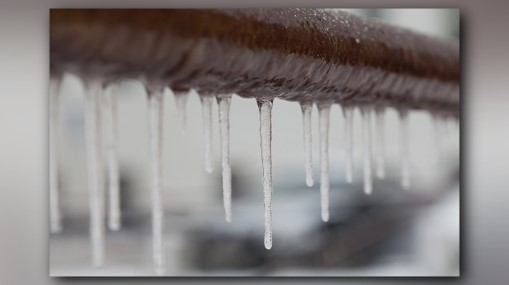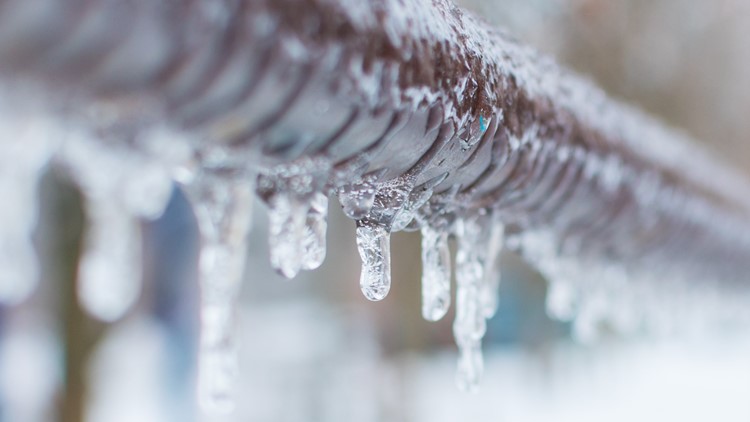Right here down the page you can find a bunch of professional additional info on the subject of Preventing and dealing with frozen pipes.

Winter can ruin your pipes, specifically by freezing pipes. Here's how to avoid it from taking place and what to do if it does.
Intro
As temperature levels decline, the threat of frozen pipelines boosts, potentially resulting in costly fixings and water damages. Understanding just how to avoid frozen pipelines is important for homeowners in cool environments.
Comprehending Frozen Pipes
What creates pipes to freeze?
Pipelines ice up when exposed to temperature levels below 32 ° F (0 ° C) for extended periods. As water inside the pipelines freezes, it expands, taxing the pipe walls and possibly creating them to burst.
Dangers and damages
Frozen pipelines can result in water supply disruptions, building damages, and expensive repairs. Burst pipelines can flooding homes and create considerable architectural damages.
Signs of Frozen Pipes
Identifying icy pipes early can prevent them from breaking.
Exactly how to determine icy pipes
Look for lowered water flow from taps, unusual smells or noises from pipelines, and visible frost on revealed pipes.
Avoidance Tips
Insulating prone pipes
Cover pipelines in insulation sleeves or make use of warm tape to shield them from freezing temperatures. Focus on pipelines in unheated or external locations of the home.
Heating methods
Maintain interior rooms properly heated, particularly locations with plumbing. Open cabinet doors to enable warm air to circulate around pipes under sinks.
Protecting Exterior Pipes
Yard pipes and outdoor taps
Disconnect and drain garden hoses prior to winter months. Set up frost-proof spigots or cover outside taps with insulated caps.
What to Do If Your Pipes Freeze
Immediate activities to take
If you presume frozen pipelines, keep faucets open to relieve pressure as the ice thaws. Utilize a hairdryer or towels soaked in warm water to thaw pipes gradually.
Long-Term Solutions
Structural changes
Consider rerouting pipelines far from exterior wall surfaces or unheated locations. Add additional insulation to attic rooms, basements, and crawl spaces.
Upgrading insulation
Purchase high-quality insulation for pipes, attics, and wall surfaces. Correct insulation aids maintain consistent temperatures and minimizes the threat of icy pipelines.
Verdict
Protecting against frozen pipelines calls for positive actions and fast actions. By comprehending the reasons, signs, and safety nets, home owners can secure their pipes throughout winter.
6 Proven Ways to Prevent Frozen Pipes and Protect Your Home
Disconnect and Drain Garden Hoses
Before winter arrives, start by disconnecting your garden hoses and draining any remaining water. Close the shut-off valves that supply outdoor hose bibs and leave the outdoor faucet open to allow any residual water to drain. For extra protection, consider using faucet covers throughout the colder months. It’s also important to drain water from any sprinkler supply lines following the manufacturer’s directions.
Insulate Exposed Pipes
Insulating your pipes is an effective way to prevent freezing. Pipe insulation is readily available at home improvement stores and is relatively inexpensive. Pay close attention to pipes in unheated areas such as the attic, basement, crawl spaces, or garage. Apply foam insulation generously to create a buffer against the cold. You can also wrap your pipes in heat tape or thermostat-controlled heat cables for added warmth.
Seal Air Leaks
Inspect your home for any cracks or openings that could let in cold air. Seal any holes around the piping in interior or exterior walls, as well as the sill plates where your home rests on its foundation. Additionally, make sure to keep your garage door closed unless you’re entering or exiting. Leaving it open creates a significant air leak that can lead to frozen pipes.
Allow Warm Air Circulation
During cold snaps, it’s essential to allow warm air to circulate evenly throughout your home. Leave interior doors ajar to promote better airflow. Open kitchen and bathroom cabinets to help distribute heat consistently around the rooms. If you have small children or pets, be sure to remove any household chemicals or potentially harmful cleaners from open cabinets for safety.
Let Faucets Drip
A small trickle of water can make a big difference in preventing ice formation inside your pipes. When temperatures drop significantly, start a drip of water from all faucets served by exposed pipes. This continuous flow helps prevent the water from freezing. Additionally, running a few faucets slightly can relieve pressure inside the pipes, reducing the chances of a rupture if the water inside does freeze.
https://choateshvac.com/6-proven-ways-to-prevent-frozen-pipes-and-protect-your-home/

I ran across that content on Prevent Frozen Pipes when doing a search on the internet. Do you know someone else who is sincerely interested in the subject? Take a moment to share it. Thanks a lot for going through it.
Call Today